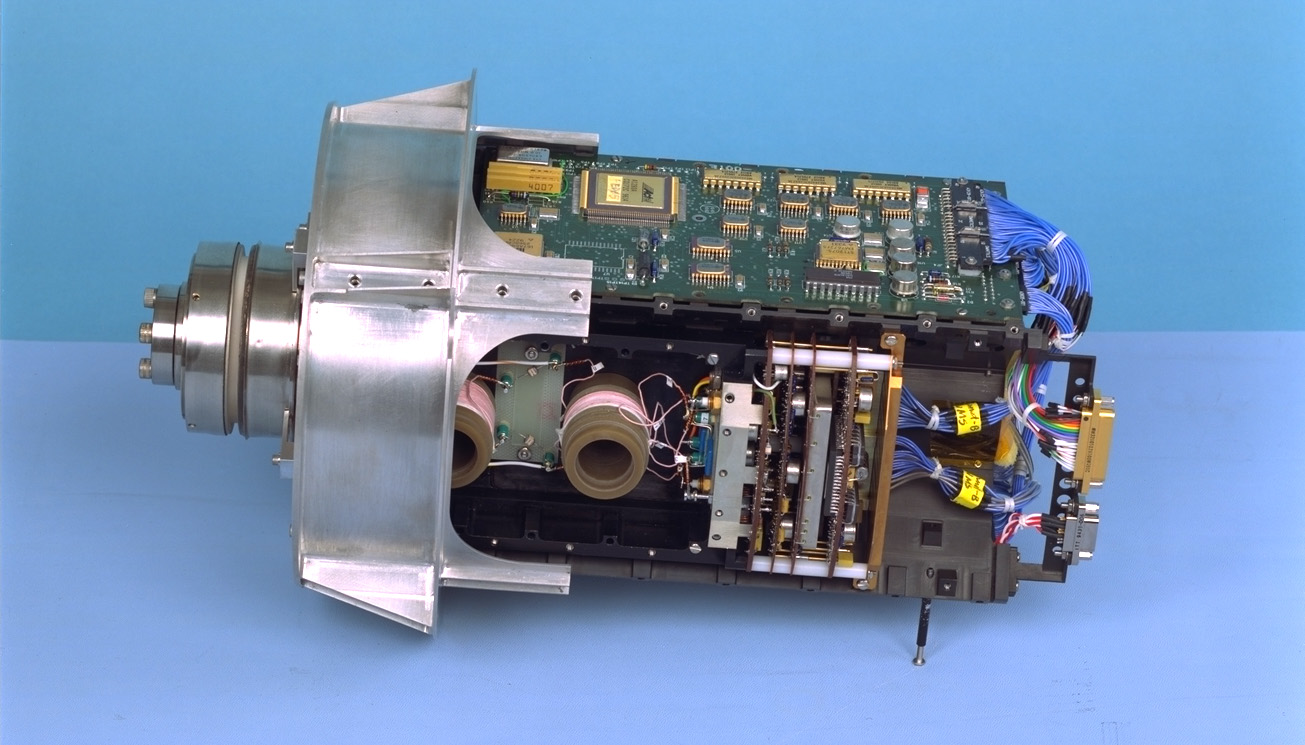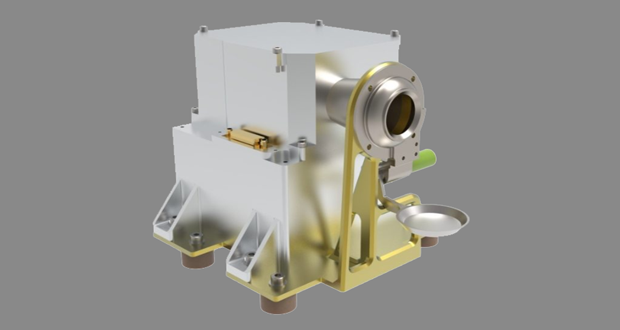After sitting in a vacuum chamber for 15 years, a gas-sniffing instrument will finally get its chance to fly.
The device, a neutral mass spectrometer dubbed SEAL, is one of four instruments from NASA’s Goddard Space Flight Center in Greenbelt, Maryland that will fly on the first set of private landers scheduled to begin delivering science instruments to the Moon starting in the early 2020s.
These instruments — which are part of a suite of instruments chosen by NASA — will power the first NASA science experiments to be conducted from the surface of the Moon since the Apollo era. Using advanced technologies to gather information about the amount of water in the Moon’s tenuous atmosphere and on its surface, to measure magnetic fields, and to determine the frequency of radio signals that can reach the Moon, these instruments will help scientists better understand the Moon as NASA works to send humans there through its Artemis program.
Here’s a closer look at SEAL and three other Goddard instruments to be delivered to the Moon through NASA’s Commercial Lunar Payload Services provider program:
Giving New Life to ‘the Rocky Balboa of Space Travel’
SEAL, which stands for Surface and Exosphere Alterations by Landers, was built in 1998 as an engineering model for Japan’s first interplanetary spacecraft, Nozomi. Had Nozomi made it to Mars, scientists would have practiced experiments on this Earth-based spare before executing them in space. But a series of malfunctions in 2003 foiled Nozomi’s mission and consigned the SEAL instrument to the back of the closet. That is, until NASA Goddard planetary scientist Mehdi Benna resurrected it earlier this year for flight to the Moon.
Refurbishing a 25-year-old instrument for a trip to the Moon wasn’t easy. The biggest challenges for Benna, the SEAL team lead, were resuscitating the ground system electronics that once powered the instrument and excavating old technical documents. Along with his colleagues, which included two engineers who had built the original spectrometer, Benna spent a week in a warehouse near NASA Goddard rummaging through old boxes in search of hardware from the Nozomi era. His team ultimately brought the spectrometer back to life and even enhanced it with technology that wasn’t available in the late ’90s.
“It’s a comeback story,” Benna said. “SEAL is like the Rocky Balboa of space travel.”
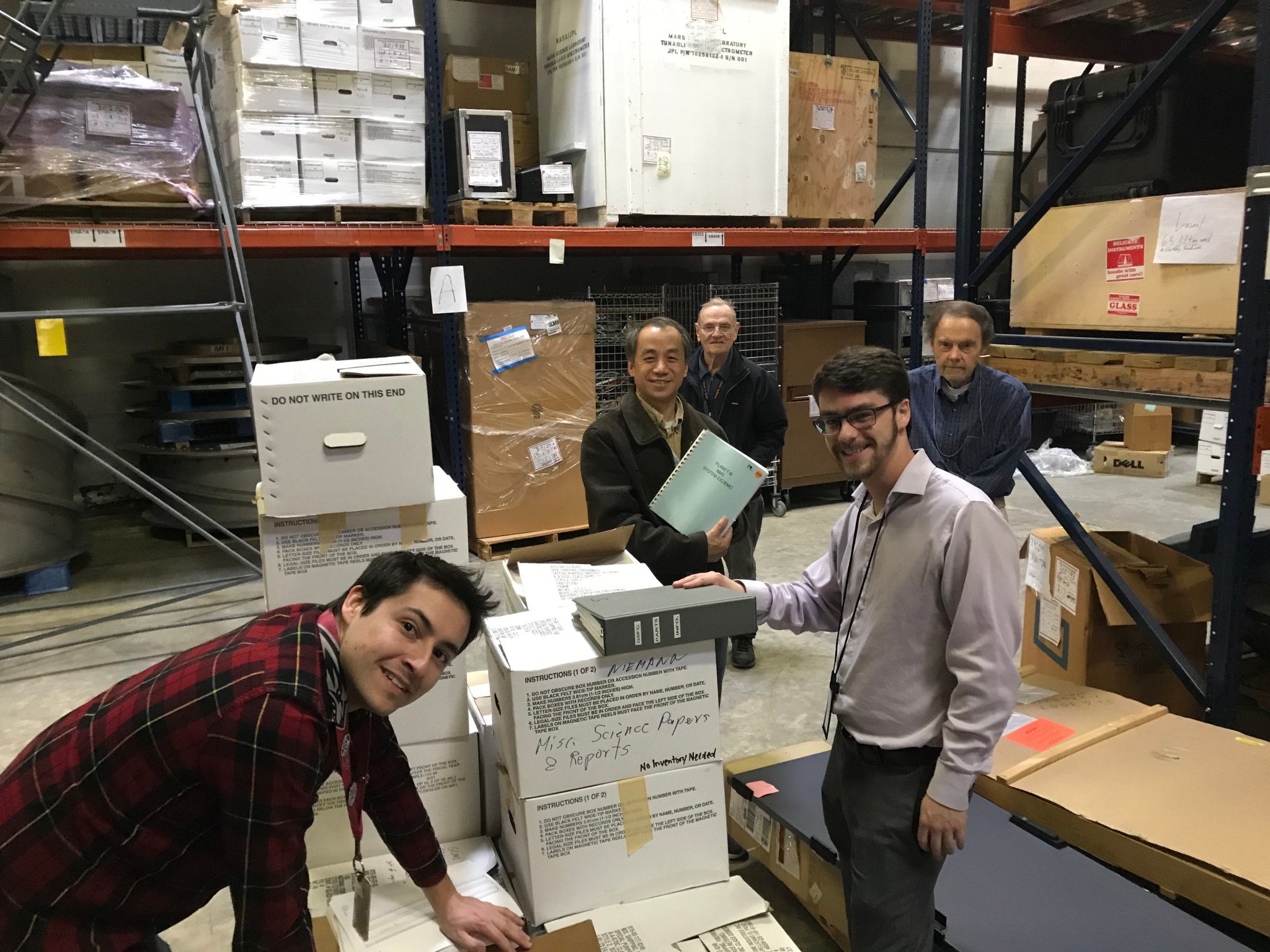
If all goes as planned, SEAL will begin taking measurements as the lander enters orbit about the Moon and throughout its descent to the surface. The spectrometer will measure the gas that gets released by the lander’s propulsion system into the Moon’s atmosphere, which is called an exosphere. Because of the high level of contaminants that will be produced by the exhaust as the vehicle swoops toward the surface, this will be a challenging task, Benna said: “We usually try to avoid turning instruments on during spacecraft maneuvers, but we’re interested specifically in that environment in this case.”
After touching down, SEAL will sniff out the engine exhaust molecules that will have made it to the Moon’s surface. Among the molecules of interest for SEAL are water and carbon dioxide, which the team expects will diffuse into the atmosphere as the surface gets heated by the Sun. The team will pay special attention to which molecules get stuck in the lunar soil and which break free and drift above the surface, possibly to different parts of the Moon, such as the poles. This will help scientists determine how temperature affects molecules on the Moon that can easily evaporate, known as volatile molecules. Ultimately, this will provide insight into the stability of water, a critical resource for exploration.
Measuring Magnetism to Uncover the Moon’s Water-Making Process
One way scientists can learn about the history and workings of moons or planets is by studying their magnetic properties with a magnetometer, which is an instrument that measures the orientation and strength of magnetic fields and is widely used on NASA missions around the solar system.
The Moon lost its global magnetic field more than a billion years ago, but pockets of magnetism have been detected in some regions. By measuring the magnetic properties near the surface of a delivery lander’s touch-down site, Goddard scientists hope to test a theory that a stream of charged particles from the Sun, known as the solar wind, smash into the Moon and initiate a chemical process that makes water, or at least hydroxyl, an ingredient of water. Some scientists have suggested that a barrier to this process could be strong magnetic fields.
“If, for example, the magnetic field at the surface that we measure is horizontal and it’s higher than 50 nanoteslas, that may provide some obstacle to the solar wind, reducing the amount of water generated or blocking it all together,” said Goddard planetary scientist Michael Purucker, who is leading the team behind the DC vector fluxgate magnetometer headed for the Moon. The team will compare their magnetic field measurements to previous spacecraft detections of water on the surface to check whether there’s a connection between field strength and amount of water detected.
Credits: NASA/Goddard Space Flight Center
Find video here
To conduct their study, the team is building a 3.5-pound (1.6 kilogram) magnetometer — one of 85 magnetometers the team has built for 48 missions throughout the solar system. The instrument will deploy by unfurling its 6-foot (2-meter) arm, which will have a sensor at the end. Because the spacecraft itself is magnetic, the instrument needs to be as far away from it as possible to get accurate readings of the surrounding environment.
Studying How Moon Water Responds to Temperature Changes
At 5.5 inches wide and just under 5 inches tall, an instrument called the PROSPECT Ion-Trap Mass Spectrometer, or PITMS, resembles a vintage box camera. But instead of collecting light to produce photos, the spectrometer will collect molecules — such as water, argon, nitrogen, carbon dioxide, carbon monoxide, and methane — from the Moon’s exosphere and sort them based on their masses to identify whether their volume changes throughout the lunar day.
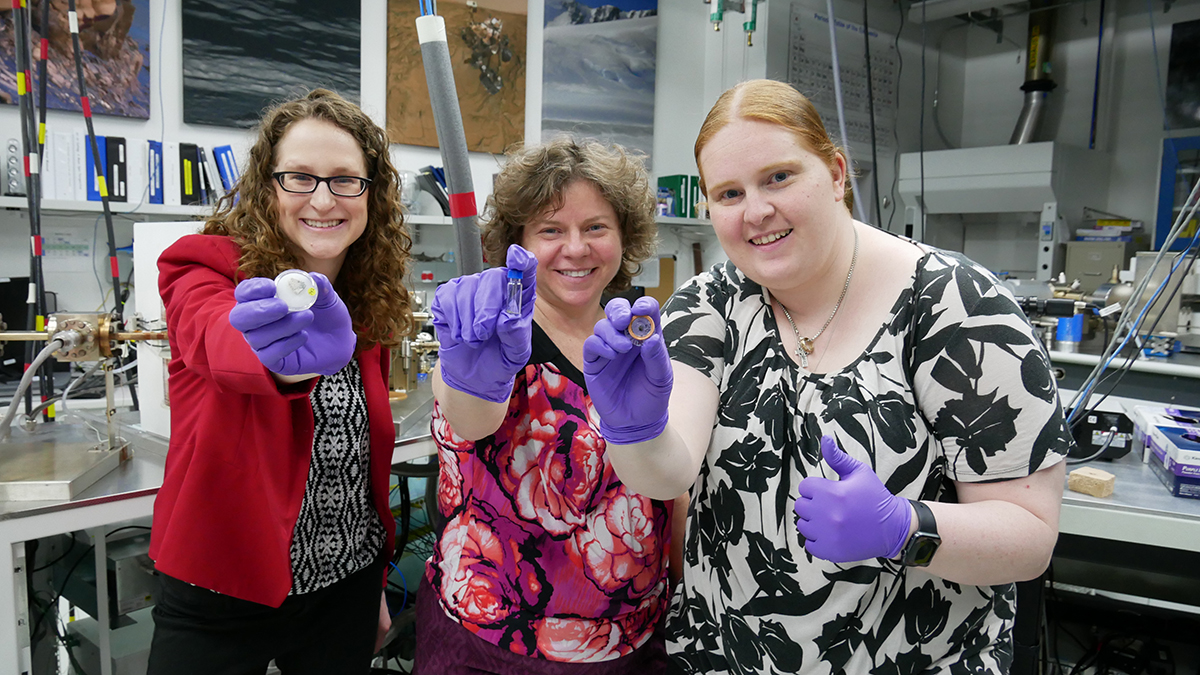
Led by Goddard planetary scientist Barbara Cohen, this experiment will also explore whether water molecules, possibly created on the surface by the solar wind, are being released into the exosphere as the Moon’s surface heats up during the sunny part of the lunar day. Since volatile compounds such as water could be resources for human exploration, Cohen’s team is hoping to better understand how it forms, how it moves during a lunar day, and to gather some insight on whether water might be moving from different regions toward the cold, dark craters at the poles, where it gets trapped in deposits that could be mined.
“After taking measurements, our team will compare them with previous observations made by spacecraft at the Moon and with our predictions of how molecules behave in the lunar exosphere to test whether our models are accurate” said Cohen. “We need these kinds of measurements at multiple sites across the lunar surface to build our understanding of the three-dimensional, natural lunar exosphere and how it responds to perturbations such as rocket exhaust.”
Engineers at Open University in Milton Keynes, England, will build the PITMS, which is based on the mass spectrometer that the same team built for the European Space Agency’s (ESA) Rosetta mission to Comet 67P/ Churyumov-Gerasimenko. The PITMS design also will be used for the ESA’s PROSPECT science package, which will analyze lunar resources for Russia’s forthcoming Luna 27 mission.
Laying the Groundwork for Observing the Early Universe
Finally, a radio-frequency spectrometer dubbed ROLSES (Radio wave Observations at the Lunar Surface of the photoElectron Sheath) will study the conditions that could affect future radio observations from the Moon. The instrument will have four, 8-foot- (2.5-meter-) long, spring-loaded antennas that will unfurl after ROLSES’ delivery lander touches down on the Moon.
The quiet desolation of the far side of the Moon makes it the perfect environment for hosting radio receivers that can detect muffled signals of energy from the early universe. Because these signals have been traveling through space for billions of years, they have lost most of their energy and are hard to detect.
In fact, radio waves have the lowest energy of all electromagnetic light. Many objects in space emit these waves, but detecting them from Earth (or from the side of the Moon facing Earth) is a challenge because of the interference from the cacophony produced by our TV and radio transmissions. Additionally, above the Earth’s atmosphere is a layer of particles charged by solar and cosmic radiation called the ionosphere, which absorbs the lowest-frequency radio waves (less than about 10 megahertz): “This is one of the reasons we send radio instruments into space,” said Goddard astrophysicist Robert MacDowall, who’s heading ROLSES. “Because if you’re close to Earth and trying to make detections, you’re looking for frequencies that cannot get to the ground.”
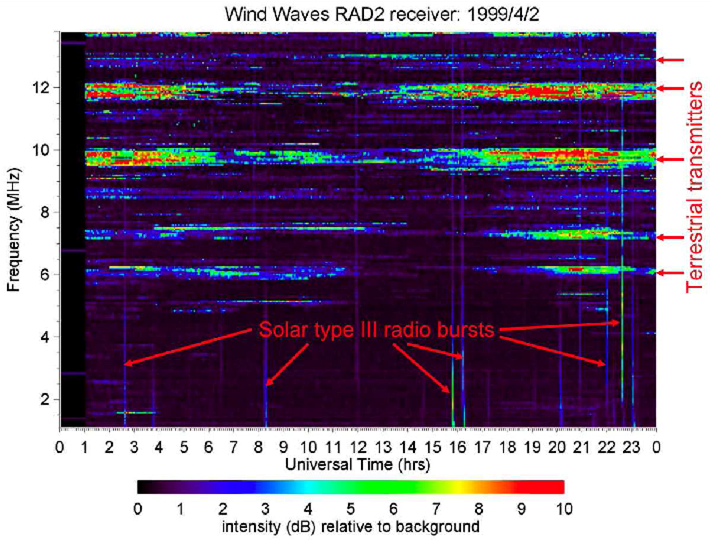
In an effort to avoid these terrestrial radio traps, some scientists want to set up radio observatories on the far side of the Moon, or the side facing away from Earthly radio noise. These observatories would help scientists determine the composition of the universe during a time known as the Dark Ages: after the Big Bang, but before stars, galaxies, and black holes began to form. They could also help identify radio emissions produced by the magnetic fields of exoplanets (planets in other solar systems), which could be signs of habitability.
But even the far side of the Moon may not be completely unobstructed, notes MacDowall. A sheath of plasma made of electrons that are liberated by ultraviolet and X-ray emission from the Sun hovers above the Moon’s surface. If this plasma is thick, it could block low-frequency radio waves from reaching radio receivers on the Moon, just like Earth’s ionosphere blocks low-frequency signals from reaching radio telescopes on the ground. While ROLSES will be delivered to a site on the near side of the Moon, it will measure the density of the electron plasma to help radio astronomers tune future radio instruments to the lowest-frequency signal that can penetrate this sheath even on the Moon’s quieter far side. Additionally, ROLSES will measure how much radio interference from Earth reaches the near side.
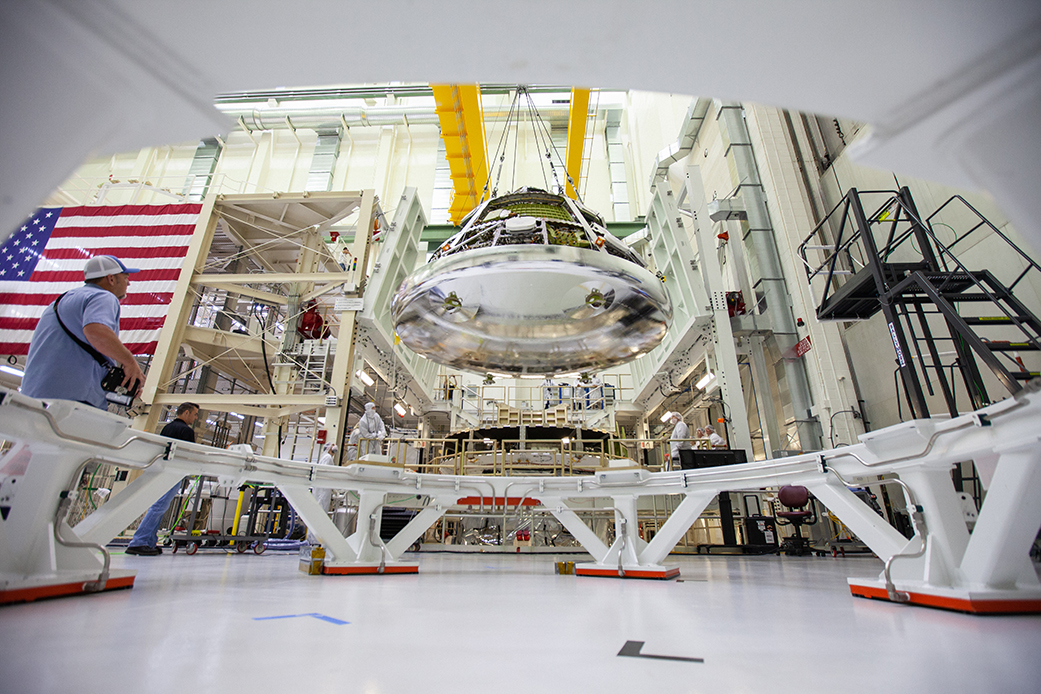
By Lonnie Shekhtman
NASA’s Goddard Space Flight Center in Greenbelt, Md.





























